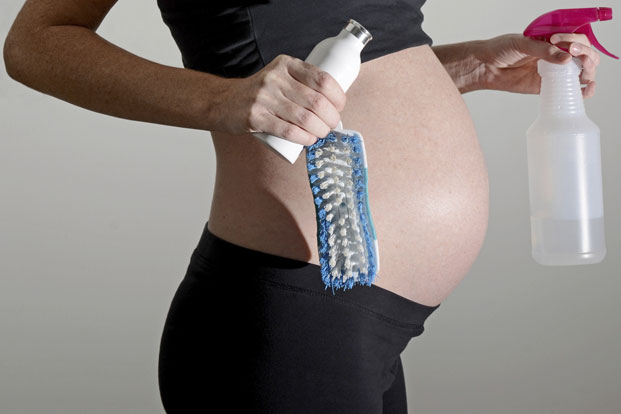Expectant mothers know the usual cautions about their condition. Don’t drink, don’t smoke, don’t clean out the cat box, take care to avoid falls or other disturbances.
But one of the big mysteries of conception is what women should do before getting pregnant. After all, the pre-pregnancy days include going to school, working, potentially indulging in risky behavior and generally living life as normal people live it. Can any of that have an effect on fetuses?
The answer is largely a mystery. The March of Dimes notes that unknown factors cause 70 percent of birth defects. While most of the known causes of defects can be traced to genetics, that leaves a wide swath of potential factors that may put future pregnancies at risk. And one of the prime suspects is potential exposure to toxins before becoming pregnant.
Researchers call substances that can cause birth defects “teratogens.” The American College of Obstetrics and Gynecology bulletin on teratology claims that the length of exposure to teratogens, as well as the level, may play a role. The stage of pregnancy is also a factor.
There is a long list of drugs and chemicals that can affect pregnancy or alter a mother’s health in pre-pregnancy. Among them are alcohol, testosterone derivatives, androgens, coumarin derivatives, folic acid antagonists, cocaine, lead, lithium, organic mercury, phenytoin, tetracycline, valproic acid, Vitamin A and its derivatives, rubella, syphilis, toxoplasmosis and varicella, among others.
Are Chemicals Working Against You?
Women who work with chemicals in their careers are rightfully concerned about the potential impact on their health.
The first step should be understanding workers’ rights. Employers are responsible for understanding and notifying workers about hazards that can affect pregnancy. They are also responsible for protecting workers from these hazards as much as can be foreseen, including providing proper ventilation, protective clothing and safety procedures that will prevent accidents or spillage.
That is the law, but sometimes employers fall short of their obligations, particularly when providing information on potential hazards in a way that is easily understood. Although it may be uncomfortable sometimes, it’s important to ask specific questions about the workplace to determine whether exposure is safe or carries potential high risk.
How Harmful Are Chemicals?
Smells alone do not determine whether a chemical is potentially harmful. Acids or chemical irritants that smell strong may not be an issue. In some cases, brief exposure may not create a hazard.
There are chemicals that can slow fetal growth, cause miscarriages or promote birth defects. This is particularly true during the first three months of pregnancy when organs and limbs form, and the mother may not be aware of the pregnancy. During the last six months of pregnancy, chemicals may slow growth or cause problems in brain development, and low birth weight may become an issue.
A chemical’s level of danger depends on the type of chemical, duration and frequency of exposure. Keep in mind that harmful chemicals must get into the body and reach the fetus to create harm. The mere presence of them in a workplace is not necessarily a concern.
Some chemicals that may be particularly problematic for a mother’s health are ammonia potassium hydroxide, chlorine sodium hypochlorite, nitric acid asbestos, hydrochloric acid (bleach), sodium hydroxide silica, nitric acid asbestos and sulfuric acid fiberglass. This is by no means an extensive list, and other chemicals may pose problems.
Chemicals enter the body through breathing, contact with skin and through the digestive system if swallowed. Chemicals that irritate the eyes, throat, skin or nose may not necessarily be harmful.
Some Questions to Ponder
You will need to ask the following questions to get a clearer picture of the situation:
Potential Problems
You may discover that the materials you are working with pose a potentially significant risk to a fetus. That’s when hard choices must be made. Transfers to less hazardous jobs may be possible, and additional ways to reduce exposure may be possible.
If those choices are not available, keep in mind that there are laws protecting pregnant workers from discrimination, and there are disability and unemployment benefits that may be available. There may also be the possibility of unpaid leave with the right of return if a doctor determines such action is warranted to protect the health of the mother and fetus.
Keep in mind that any benefits given to temporarily disabled employees must be available to women who are disabled because of pregnancy.

Leave a Reply